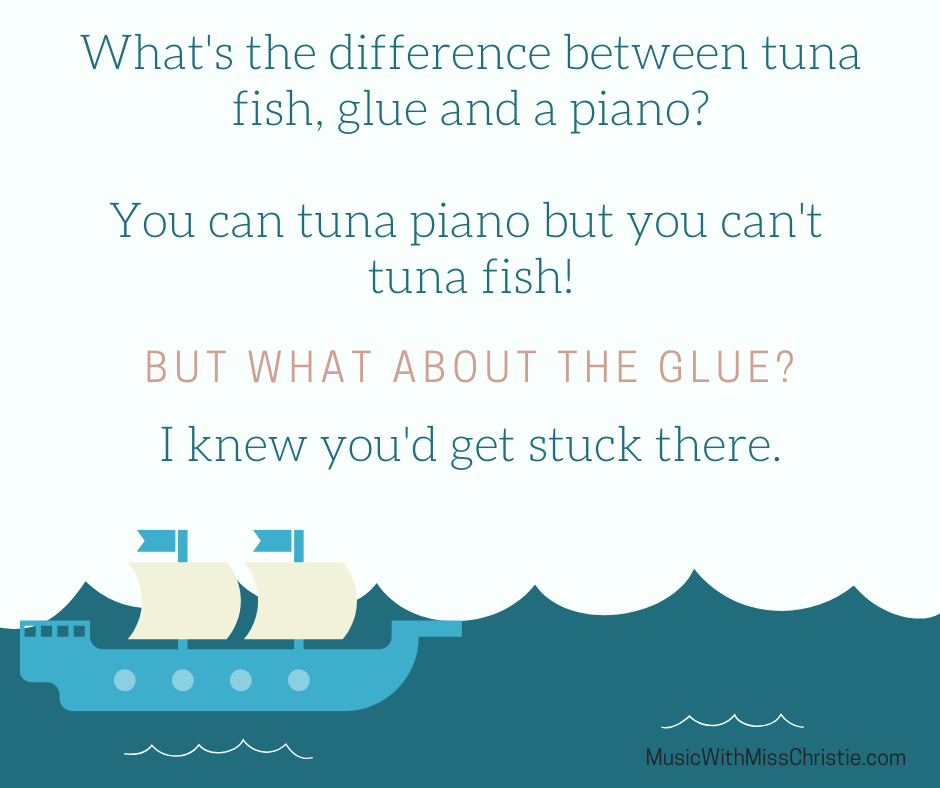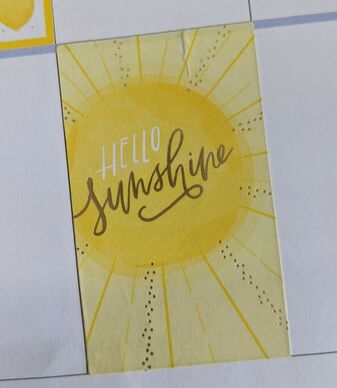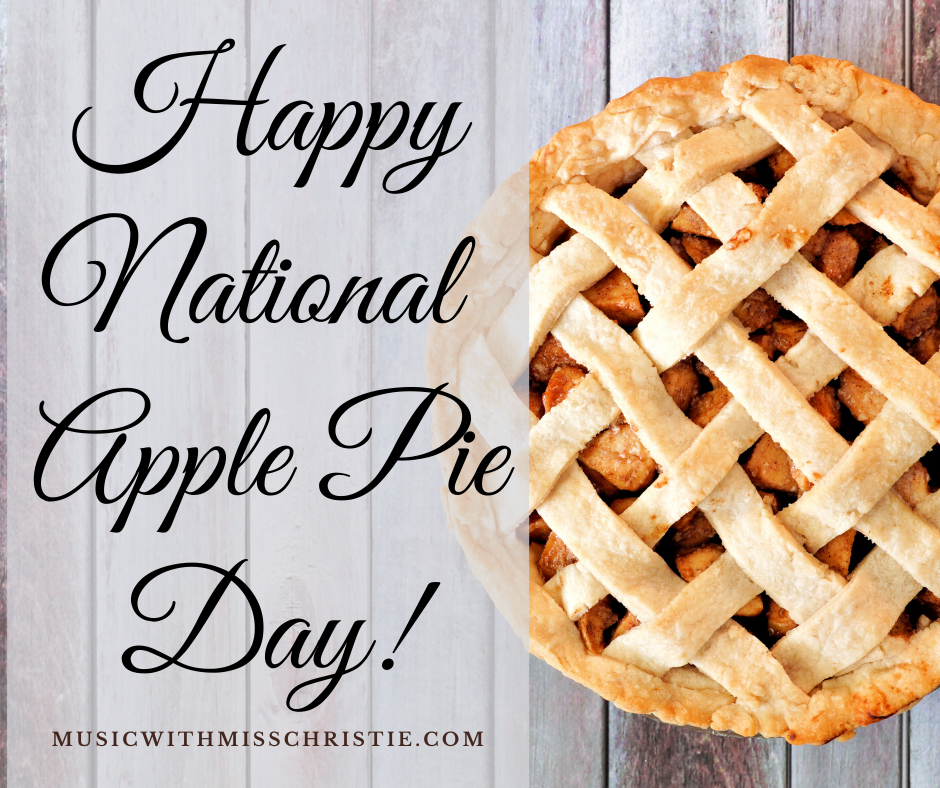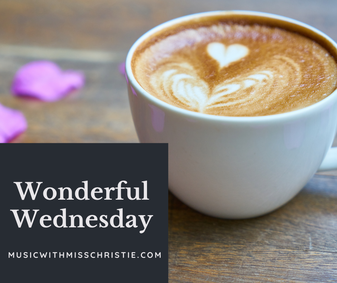|
My dad sends me a-joke-of-the-day every day. And I mean, who doesn't love a good joke? Even the groaners.
So here's one of my favorite "bad dad" jokes that happens to also be a music joke! :)
0 Comments
Here in the United States, Memorial Day is celebrated on the last Monday of May. It is a time for us to mourn and honor those who lost their lives serving our country in the armed forces, but for many Americans, it's become a day off of work to play and eat with family and friends.
This year will be different since many of us are still in quarantine and are unable to gather. So, I'd like to challenge us all to treat the day with the respect it deserves. We can and should still enjoy ourselves, after all that's what those brave men and women gave their lives for, but let's take a moment to remember and be grateful for their sacrifices. I've compiled a few playlists of music to help your weekend of remembrance. Some are traditional American songs, others more modern and contemporary. Whatever genre speaks to you, I hope you enjoy a wonderful Memorial Day weekend and God Bless America! Instrumental Patriotic Songs Country Music Songs American Patriotic Songs and Marches Memorial Day Weekend Playlist (Pop/Rock Summer Songs) I love this little sticker more now than I did when I put it in my planner a few weeks ago.
I keep flipping back and looking at it because even though it's torn and wrinkled, it's still sunny and happy, and it brings me joy. (The picture really doesn't do it justice.) It also serves as a reminder that no matter what life does to me, we can still shine through all the wrinkles and tears and messiness of life. So let your light shine, even in your darkest days. Happy Wednesday! "You Watch Your Phraseology" has been a statement that I've thought of a lot over my career. (Btw, 2 points if you know where that quote comes from!)
A few of years ago, I was working with a young student on finger shape. I used all of the imagery I could think of, I showed him with my hand, I shaped his hand for him, and when he finally got it, I said, "Yes! Can you play like that forever?" His response, "Yeah!" And you know what? He has! Granted, he still needs reminders from time to time, but this one student, who struggles like all kindergartners do with their hand shape, has been more consistent than any other young student of mine. That got me thinking - what was different? Was it the student? Was it the song we we working on? Was it what I said? Was it where he is in his studies? After mulling over all of those questions, I decided to do a little experiment. Whenever a student and I fixed their finger shape I said, "Yes! Can you play like that forever?" That's when I realized that it was how I said what I said that made the most impact. We all have been taught that our tone matters as much as our words, but I'm finding that kids are hearing the same phrases from every adult and they are starting to tune them out. Here are a few of my favorites: Rephrasing Common Statements "Tell me." Instead of "Use your words." (This one has been HUGE! My students give clearer responses and actually think about what they're going to say.) "Show me how you did this at home." instead of "Did you practice the way I asked you to?" "I'm going to remind your thumb that he belongs on the keys too." instead of "Fix your hand please." Replacing Statements with Questions Asking questions makes us think. So naturally rewording a statement into a question will get your students more focused on what's going on rather that what you said. "Did your eyes get lost on the keys?" instead of "Look at the music." "Are your words confusing your fingers?" instead of "Don't stop playing when you count out loud." "Placing Blame" Changing our wording also gives students the opportunity to think about their mistakes from an observers point of view. When we make poor word choices in our corrections, we make our students feel like they're failing or being attacked for making a mistake. But when we take the time to address the mistake as a learning opportunity, students are able to see that they are in control of the situation. They are empowered to make the necessary mistakes of learning and to take initiative to fix those mistakes. Sometimes I blame their fingers for the mistake to help my students save face and give them the chance to get over the embarrassment of having a train wreck moment. I'll hold up the offending finger and have a candid conversation that goes something like this.... "What are you doing, finger 2? It's not your turn to play there. That's not fair to finger 4 who was supposed to play. Do you promise to let finger 4 have it's turn and to only play when it's actually your turn?" I then have the student tell me if their finger agreed and they happily play the passage again without finger 2 getting in finger 4's way. 🙂 Now, there have been some unsuccessful phrases, but sometimes rewording what we say reaches our students where they are in the moment and makes for a happier and more productive lesson. What interesting phrases have you caught yourself saying? Do you have a different way of correcting your students? I'd love to know! Happy National Apple Pie Day!
Apple pie is said to be America's favorite dessert and today, May 13, 2020, is designated to be its nationally celebrated day. How do you like your apple pie? Warm or cool or chilled... A la mode or with whipped cream or are you a purist who likes it plain... Lattice pie crust, or a full double-crust or Dutch crumb topping... Anyway you like it, I hope you're able to enjoy a slice today! Happy Wednesday! I love working with beginner students, especially little ones. Their creativity, imagination, and willingness to explore inspires & invigorates me. I particularly love the moments when they discover or master something new. The light in their eyes is beyond compare.
We as music educators know that those 30-minutes each we week spend with our students is crucial, but not enough to sustain growth in our students. Effective at home practice is essential to the development of every musician. Practicing can be a little mysterious, especially for young beginners. And if mom and dad don't have much musical experience they might be unable to help, which can make it feel confusing or overwhelming. Over the years I've come up with a variety of tools I use to help my students become independent learners, but practice steps have by far been the most helpful. Breaking down the practice process into easy, bite-sized pieces makes practice more manageable and helps beginner students develop successful practice habits from the start. The cool thing about these practice steps is that your beginner students will experience success with their new pieces before playing a single note. Two quick notes about counting and repetition of steps. Counting is essential through all of these steps! To count during every step, I have students say the finger number/letter name of the note then count the beats the note is held. For example, a whole note played on C would be said "C-2-3-4". I encourage my students to repeat each practice step at home only moving on to the next when they know they've mastered the previous enough to (almost) guarantee success. If they struggle too much with a step, I have them go back to the previous one and review it before trying again. Okay, now onto the Practice Steps! 1. Point & Read I've found this step to be the most crucial step for student success. This is the most basic form of music reading broken down to letter names (or finger number depending on their level) and hands. I have my students point to the notes with the matching hand and read the letter name out loud. There are a few things that I think lead to student success with this step. First, they're isolating the notes that they'll be playing without having to think about finger shape, fingering, rhythm, steady beat, dynamics, or any of the other technical necessities of playing the piano. Second, they are able to analyze their mistakes more quickly. Since their finger is right on the note on the page we both can see what they're looking at, I know whether or not they're looking in the right spot, and we can easily compare the current note to the ones around it making correction a breeze. Third, they're learning how to track the music on the page. How many times have you said, "Look at your music" or "Keep your eyes on the page" or "Stop looking at your fingers"? By bringing both the hands and the eyes onto the music itself, you're starting the connection between all working parts before they even play a note. And lastly, they're making associations between the notes and the hand (fingers will come later). I insist that my students point to right hand notes with their right hand and left hand notes with their left hand. This physical reminder translates seamlessly to their playing. 2. Tap & Read Tap and read is everything from Point & Read with one change, they're tapping the rhythm instead of pointing to the note. This step brings the rhythm to life without overwhelming your student with keys, fingers, technique, dynamics, etc. They're still saying the letter names and counting the rhythms AND they get to feel what those rhythms by tapping. This is where I start getting creative in my teaching. I've had students tap on drums, on tambourines, with rhythm sticks, on their shoes, their head, their bellies. Heck, I've even had students stomp the rhythm in her bare feet. All I ask is that they say the letter name, count the rhythm, and tap with the correct hand. Beyond that, anything goes with this step! I usually have my students do this and the first step a few times during their lesson and I'll sing the note names to help their ear hear what they'll be playing! 3. Play & Say (HS/HT as needed) Now they're ready to start playing! By this point, my student has read the note names, identified, tapped and counted the rhythms, and heard the piece through my voice. Even the most timid or perfectionistic learner will have enough experience to be able to play the new piece. When students play & say, they are saying the note names the same way they did in steps 1 and 2 and playing. It's completely okay if this step doesn't happen during the lesson. Setting up the student's base knowledge of what they're playing will enable them to achieve this step in their at home practice. 4. Play This final practice step is one that my students look forward to because I tell them they aren't allowed to do this step until they have masters steps 1-3! Once the first 3 steps are mastered, playing their piece will be so easy, they won't have to worry. They'll know when they're right and when they've made a mistake. They'll also know how to fix their mistake and learn from it! Here are two free resources to help get you started using practice steps with your students. Practice Step Post-Its are easily moved from piece to piece Practice Step Stickers are smaller Try using these practice steps with some of your beginning students and let me know how it goes! Looking for more resources? I'm adding more to my Teachers Pay Teachers Store all the time! It's no secret, I love to bake. I love to bake as much as I love my job, maybe even a little more sometimes (shh, don't tell).
I haven't baked much over the last few years. Between starting & running the academy, getting married, and trying not to put on any more weight than I already had in my 20s, I didn't have much time or energy for it. We've had a stay at home state-mandate for almost 8 weeks now and being home has given me the urge to be in the kitchen more. Don't get me wrong, I still don't have much time, but "where there's a will, there's a way" is a saying for a reason. Last time I experimented in the kitchen, I learned how to bake bread. This time I wanted to try something different, so I started experimenting with aquafaba. What is Aquafaba? You may not have heard the word before, but if you've ever eaten beans, you've definitely seen it. Aquafaba is the liquid left in a can of beans. Most baking is done with chickpea aquafaba, but depending on the application, it is my understanding that any bean "juice" can be used. What do you use Aquafaba for? Aquafaba is primarily used as an egg substitute. It's a very popular ingredient in vegan cooking and baking. I've seen recipes that use it as the base to a sauce, ice cream, butter cream, and much more! I made coconut macaroons and "vegan" brownies with aquafaba instead of eggs. I put vegan in quotes because the recipe itself had all vegan ingredients, but my chocolate chips are not vegan. Here's my coconut macaroon recipe. Enjoy! Aquafaba Coconut Macaroons ¼ cup aquafaba (or 2 egg whites)* ¼ tsp. vanilla extract dash of salt ⅔ cup sugar 1½ cups unsweetened coconut (sweetened coconut can also be used) Preheat oven to 325° Beat the aquafaba, salt, and vanilla until soft peaks form. (This can take 10 minutes to achieve with aquafaba) Gradually add sugar, beating until very stiff and glossy. Gently fold in coconut; drop by rounded teaspoons about 2” apart on parchment lined cookie sheet. Bake for about 20 minutes or until set and golden brown. Let cool on rack. *One 15-oz. can of chickpeas yields about 1/2-3/4 cup of liquid Happy Wednesday! When Life Throws You a Curve-ball, You Make Lemonade: Creating a Morning Routine During a Pandemic5/1/2020 Do you remember when I promised a series on my morning routine and how I was experimenting with different routines and would fill you in along the way?
No? It's okay, I almost didn't remember too. This series began about a month after I started this blog. It was going to be my first big series here and I was excited to dive into different morning routines with you. Then…well you know what happened. Our world was turned upside-down by the coronavirus. I know, I'm tired of hearing and talking about it, but this virus is a major game-changer in our lives and our routines. This blog series is a perfect example of how life got upended. I had planned to post a different routine that I tried every couple of weeks with a final summary that should've come out last week. Instead, I went into survival mode and if I'm totally honest with myself (and you) I still feel like I'm there. I've been trying to write this post for the last several weeks. I spent hours over spring break thinking and staring at the blank screen in front of me. When it came down to writing, I just couldn't find words appropriate to the situation. Here we are on May 1st and I still don't have the words. So rather than of giving an in-depth review of the routines I tried, I'm going to share my takeaways to help you build the best morning routine for you! WHAT KIND OF MORNING ROUTINE DO I NEED? That my friend, is a question that only you can answer. Morning routines vary widely from person to person and what works for me will not necessarily work for the mother or father of 3 or for the senior in college or for the nurse coming off of a 12-hour shift. To find the right morning routine, you have to know what your priorities are for the day and what will serve you best. ASKING THE IMPORTANT QUESTIONS Every morning routine I researched fell into one of three categories: productivity, self-care, or mindfulness with the allowance for overlap. Remember, a good morning routine always serves you. When you know what type of routine you need, make sure you choose activities that answer the following questions for that category. Questions for Self-Care Routines:
Questions for Productivity Routines:
Questions for Mindfulness Routines:
MY BIGGEST TAKEAWAYS Start the day well rested. You won’t enjoy your morning routine if you’re trudging through it groggily and half-asleep. Get yourself a good 7-8 hours of sleep. I know, it’s not always easy for us to get the right amount of sleep, but you’ll be amazed at how good you feel when you’re well rested! Make sure that your morning routine serves you in every capacity. If you need quiet and contemplative, focus on activities that calm and center you. If you have a lot of energy and need something vigorous, throw in some exercise. If you need a boost in creativity or productivity, find ways to spark your imagination. Just because going for a run then doing 20 minutes of yoga before having your coffee and breakfast worked yesterday, doesn’t mean it will work today. Find what you need and adjust your routine to meet you where you are this morning. Give yourself more time than you think you’ll need for your morning routine. I tried several 30 minute or 1 hour morning routines and they ALWAYS took longer! It started making these routines feel like a to-do list instead of the enjoyable way to get my day started. Give yourself at least 10-15 minutes more than you think you’ll need and future you will thank you. Plan your morning routine before you start. I know what you're thinking. "Christie, I'm not going to know how I'll feel in the morning, and what kind of routine I'm going to need, how can I plan it?" Hear me out. If you start trying to change your morning routine flying by the seat of your pants (like I did), you'll get overwhelmed, frustrated and you'll stop before having a routine becomes a habit. Creating a plan for each one of the routines listed above will set you up for future success. So, what makes up your morning routine? Is it serving you or will you be making a shift? Let me know! |
Archives
February 2022
Categories
All
|






 RSS Feed
RSS Feed